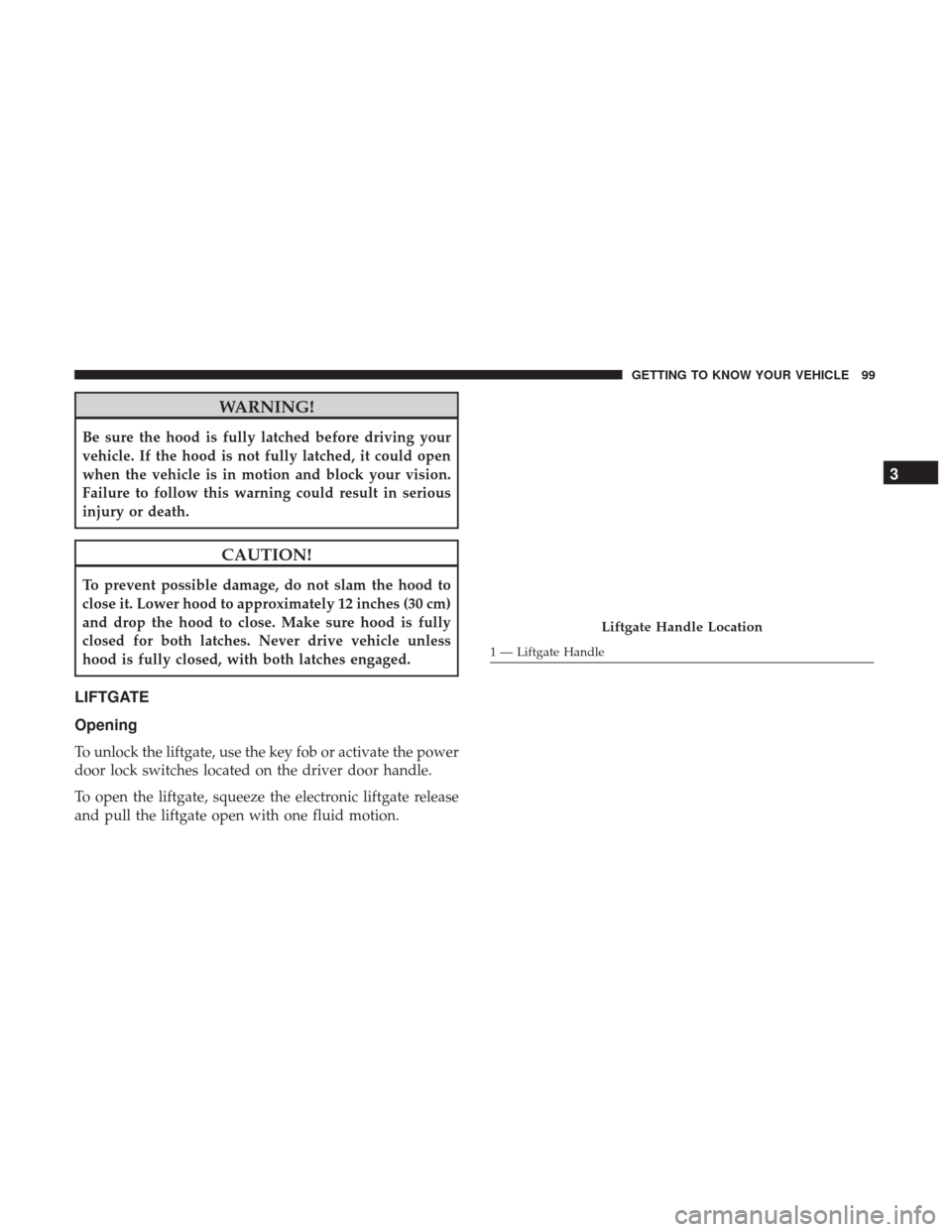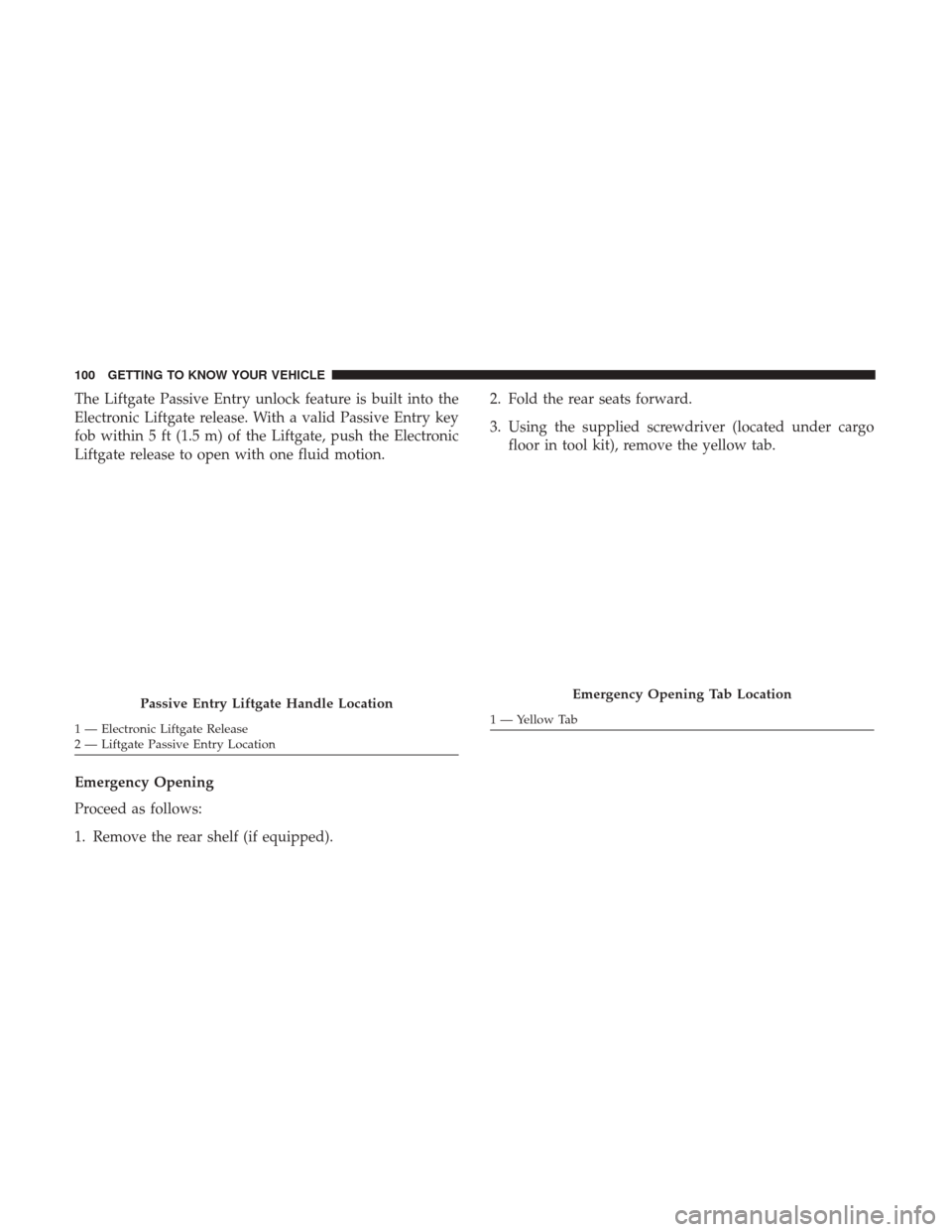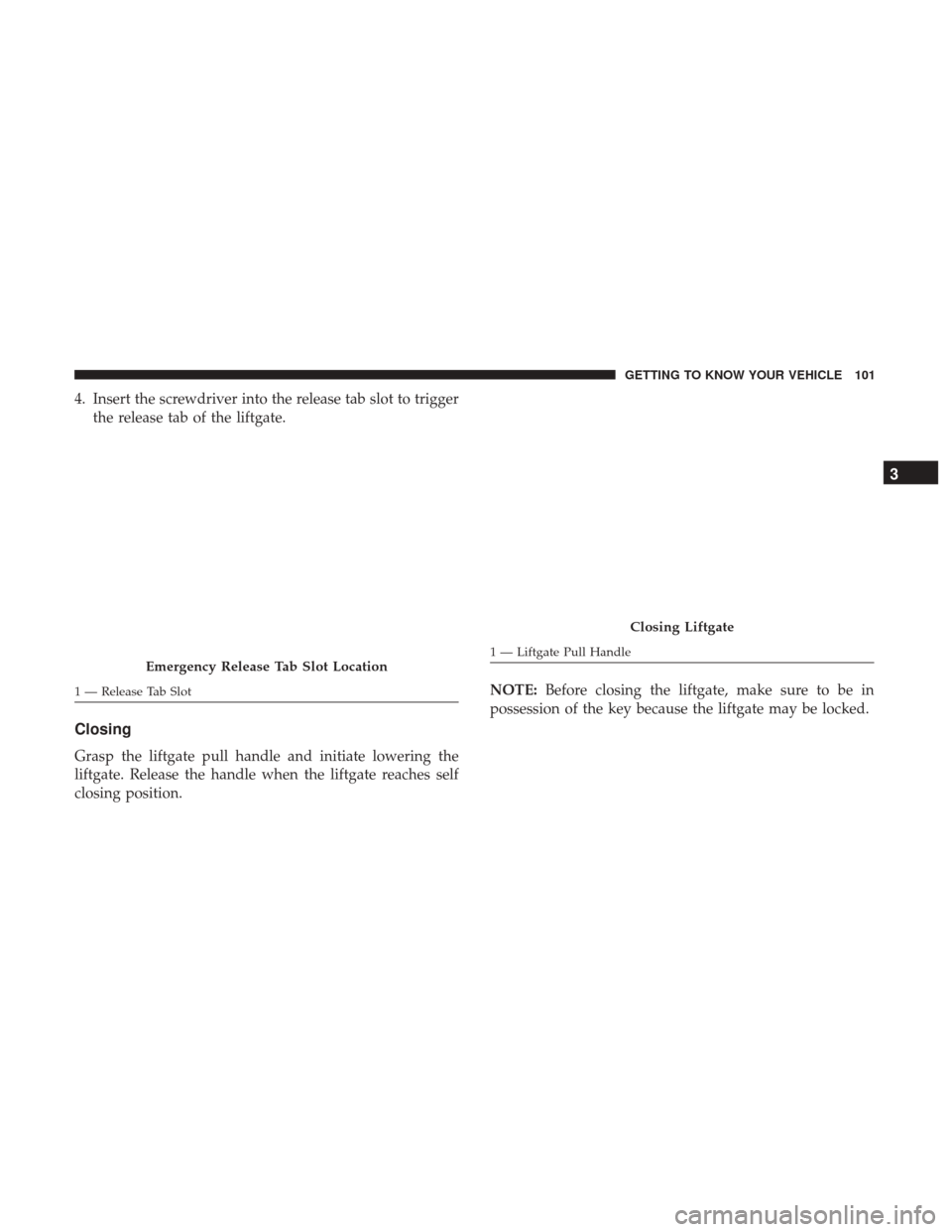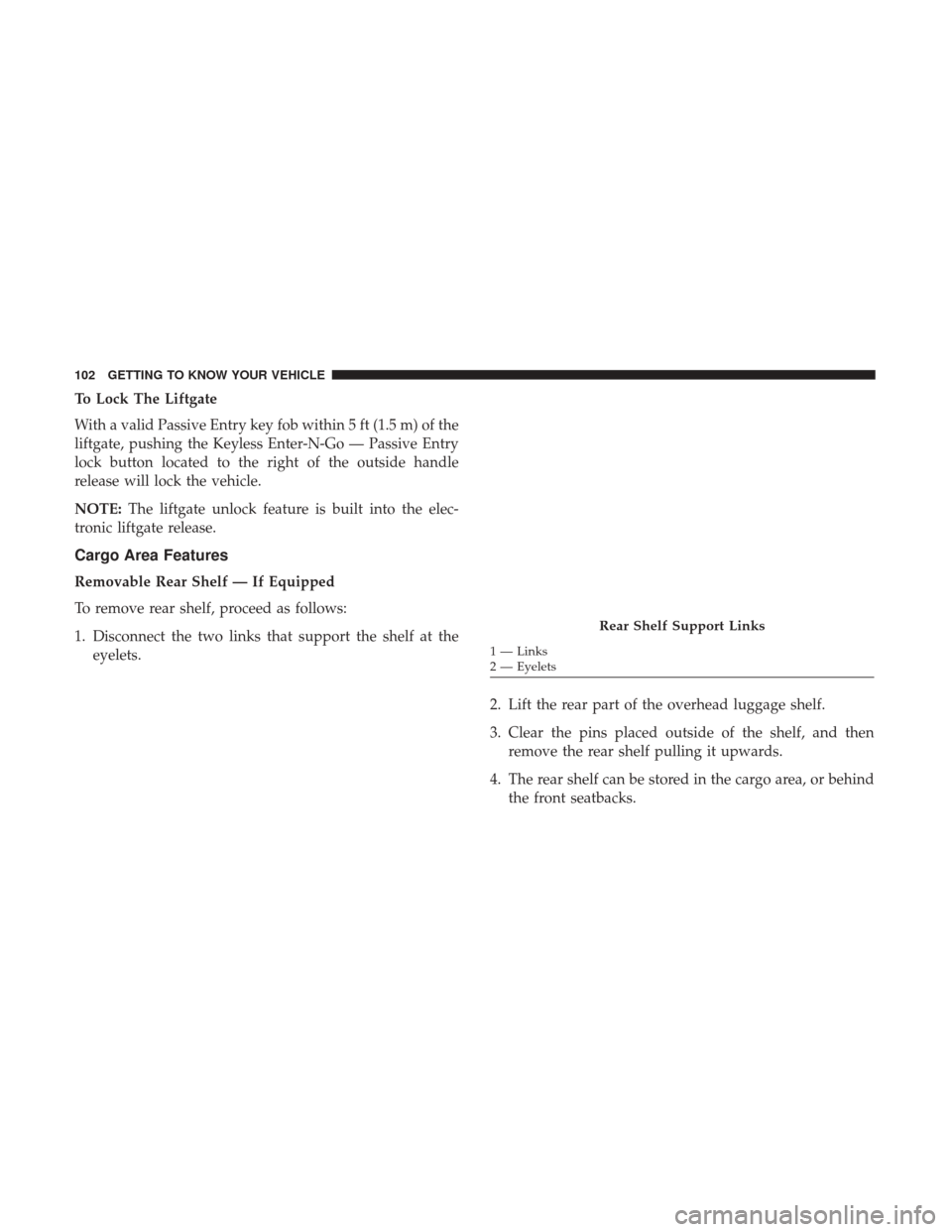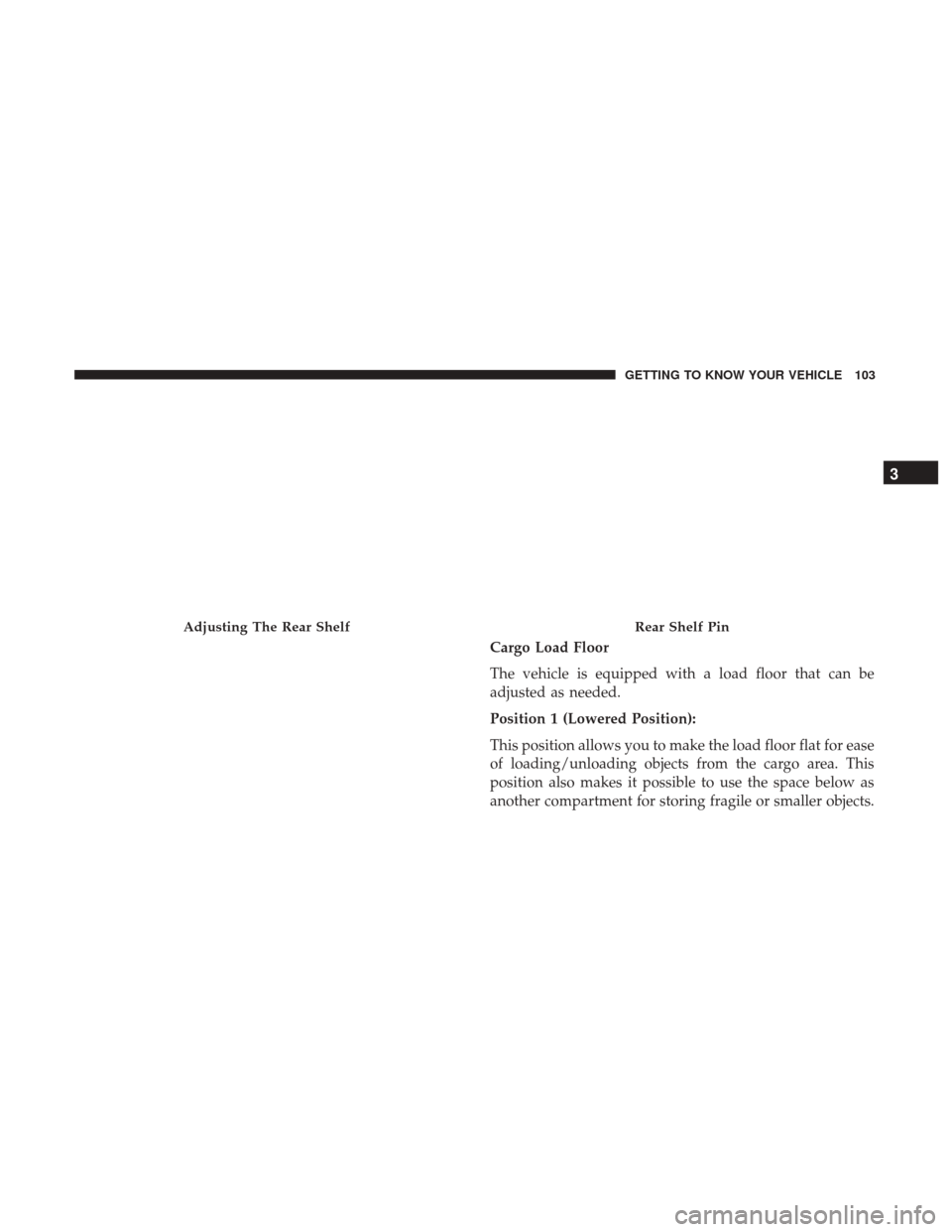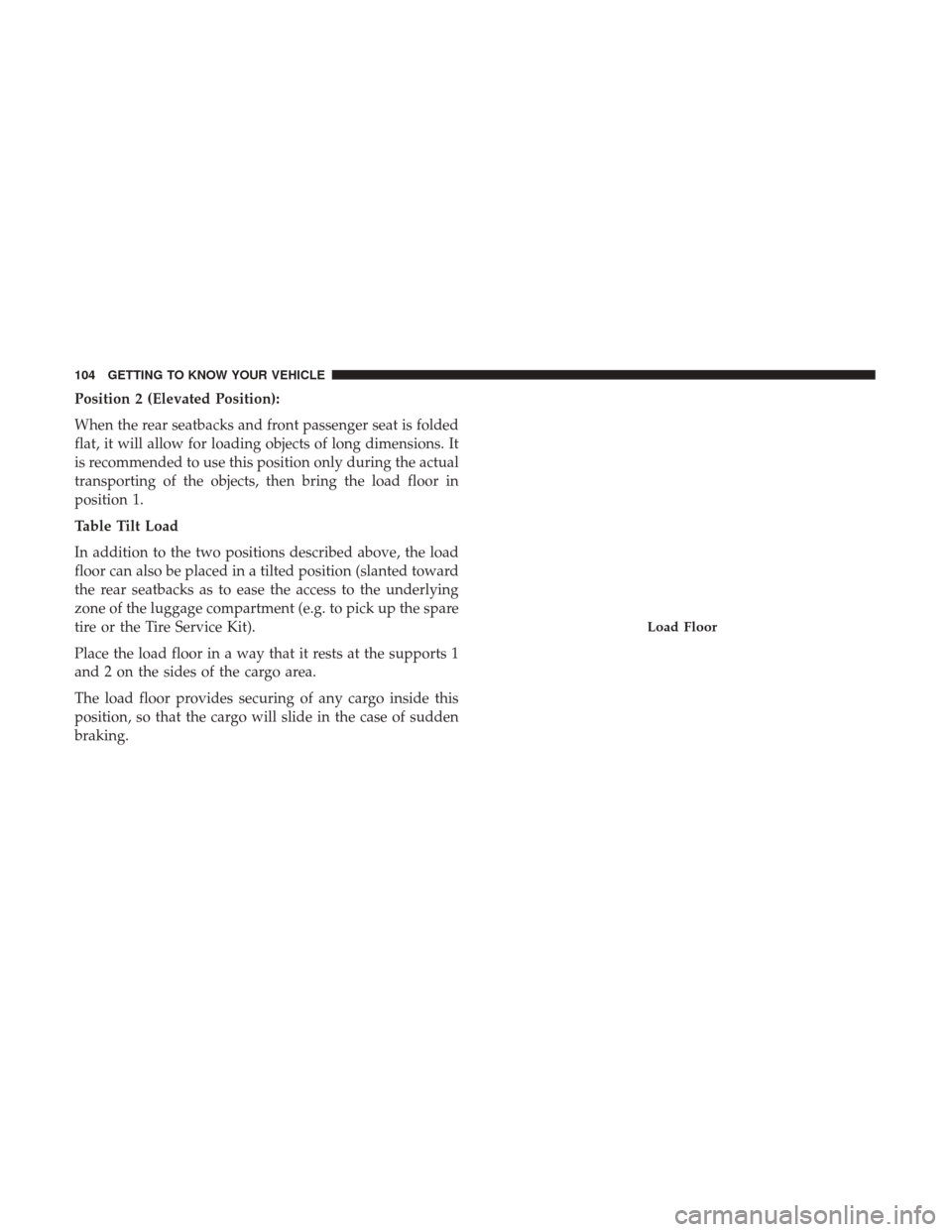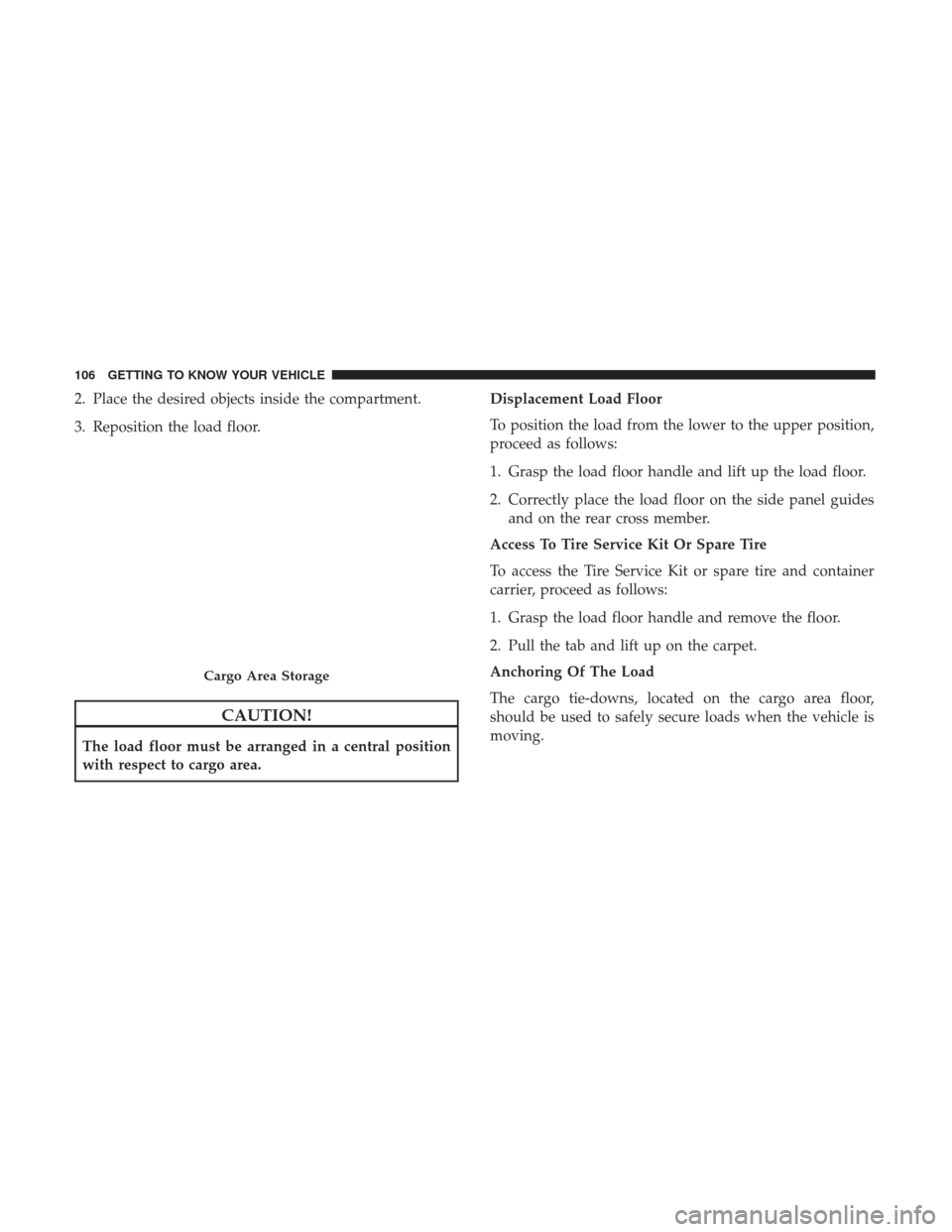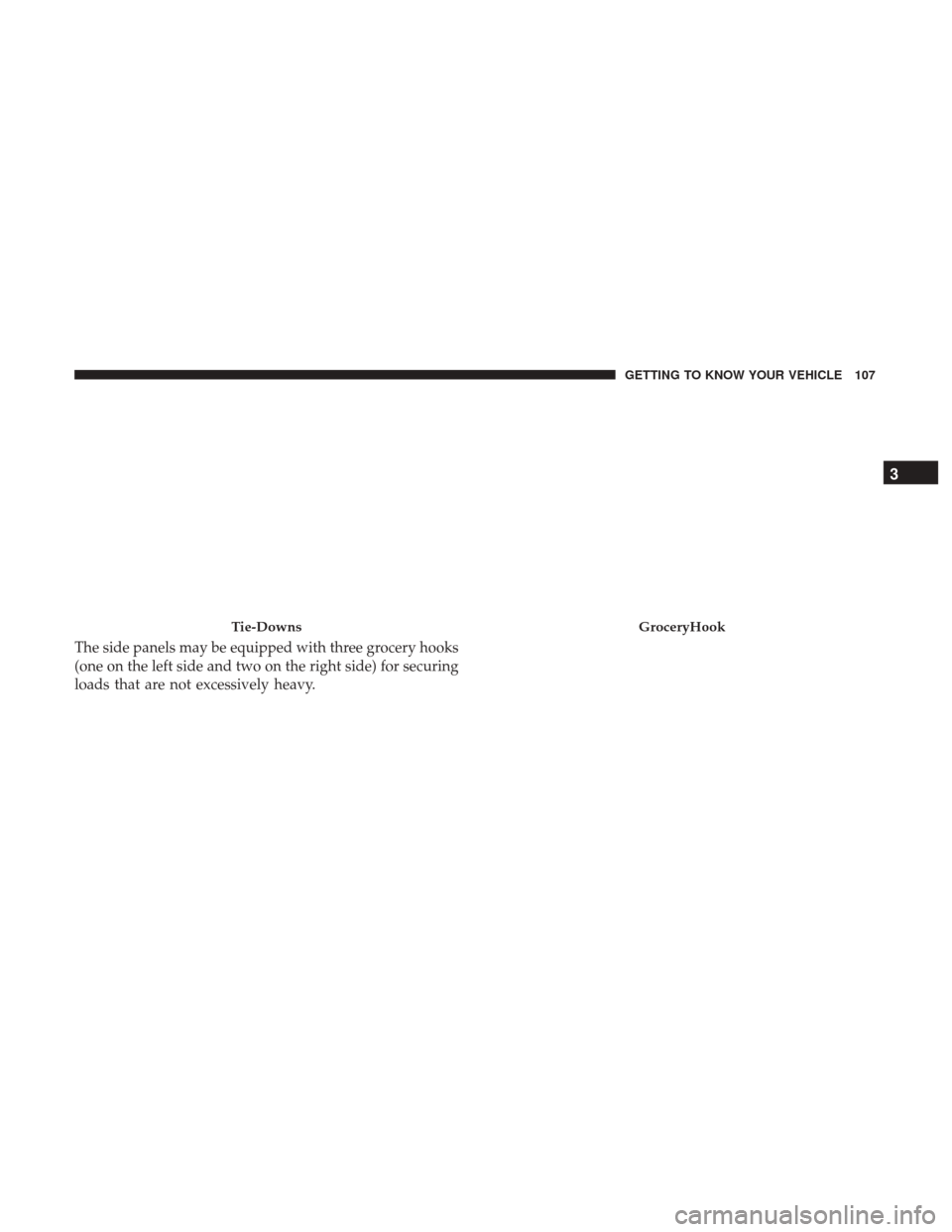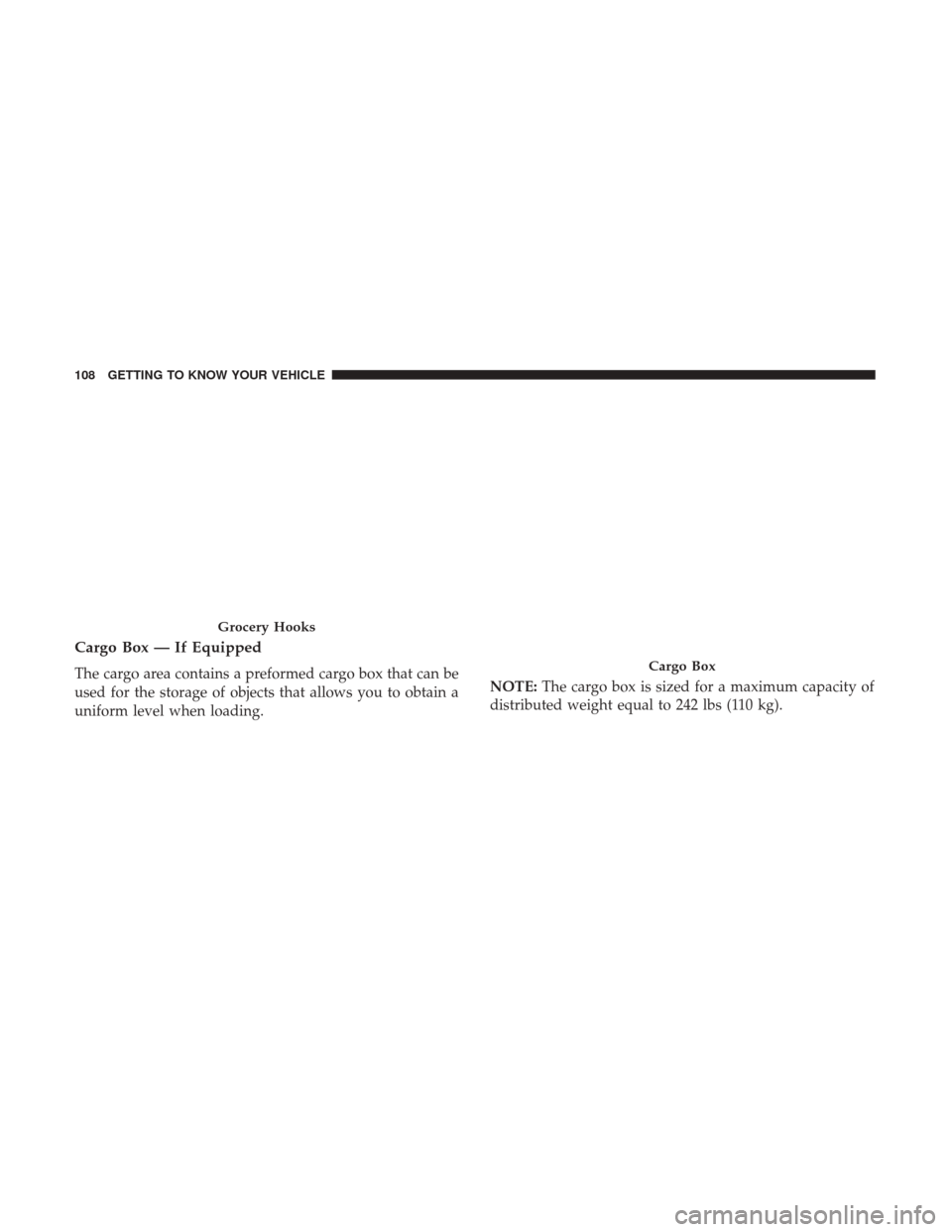JEEP RENEGADE 2017 1.G Owners Manual
RENEGADE 2017 1.G
JEEP
JEEP
https://www.carmanualsonline.info/img/16/7152/w960_7152-0.png
JEEP RENEGADE 2017 1.G Owners Manual
Trending: ESP, clutch, AUX, low beam, wheel torque, adding oil, dashboard
Page 101 of 516
WARNING!
Be sure the hood is fully latched before driving your
vehicle. If the hood is not fully latched, it could open
when the vehicle is in motion and block your vision.
Failure to follow this warning could result in serious
injury or death.
CAUTION!
To prevent possible damage, do not slam the hood to
close it. Lower hood to approximately 12 inches (30 cm)
and drop the hood to close. Make sure hood is fully
closed for both latches. Never drive vehicle unless
hood is fully closed, with both latches engaged.
LIFTGATE
Opening
To unlock the liftgate, use the key fob or activate the power
door lock switches located on the driver door handle.
To open the liftgate, squeeze the electronic liftgate release
and pull the liftgate open with one fluid motion.
Liftgate Handle Location
1 — Liftgate Handle
3
GETTING TO KNOW YOUR VEHICLE 99
Page 102 of 516
The Liftgate Passive Entry unlock feature is built into the
Electronic Liftgate release. With a valid Passive Entry key
fob within 5 ft (1.5 m) of the Liftgate, push the Electronic
Liftgate release to open with one fluid motion.
Emergency Opening
Proceed as follows:
1. Remove the rear shelf (if equipped).2. Fold the rear seats forward.
3. Using the supplied screwdriver (located under cargo
floor in tool kit), remove the yellow tab.
Passive Entry Liftgate Handle Location
1 — Electronic Liftgate Release
2 — Liftgate Passive Entry Location
Emergency Opening Tab Location
1 — Yellow Tab
100 GETTING TO KNOW YOUR VEHICLE
Page 103 of 516
4. Insert the screwdriver into the release tab slot to triggerthe release tab of the liftgate.
Closing
Grasp the liftgate pull handle and initiate lowering the
liftgate. Release the handle when the liftgate reaches self
closing position. NOTE:
Before closing the liftgate, make sure to be in
possession of the key because the liftgate may be locked.
Emergency Release Tab Slot Location
1 — Release Tab Slot
Closing Liftgate
1 — Liftgate Pull Handle
3
GETTING TO KNOW YOUR VEHICLE 101
Page 104 of 516
To Lock The Liftgate
With a valid Passive Entry key fob within 5 ft (1.5 m) of the
liftgate, pushing the Keyless Enter-N-Go — Passive Entry
lock button located to the right of the outside handle
release will lock the vehicle.
NOTE:The liftgate unlock feature is built into the elec-
tronic liftgate release.
Cargo Area Features
Removable Rear Shelf — If Equipped
To remove rear shelf, proceed as follows:
1. Disconnect the two links that support the shelf at the eyelets.
2. Lift the rear part of the overhead luggage shelf.
3. Clear the pins placed outside of the shelf, and thenremove the rear shelf pulling it upwards.
4. The rear shelf can be stored in the cargo area, or behind the front seatbacks.
Rear Shelf Support Links
1 — Links
2 — Eyelets
102 GETTING TO KNOW YOUR VEHICLE
Page 105 of 516
Cargo Load Floor
The vehicle is equipped with a load floor that can be
adjusted as needed.
Position 1 (Lowered Position):
This position allows you to make the load floor flat for ease
of loading/unloading objects from the cargo area. This
position also makes it possible to use the space below as
another compartment for storing fragile or smaller objects.
Adjusting The Rear ShelfRear Shelf Pin
3
GETTING TO KNOW YOUR VEHICLE 103
Page 106 of 516
Position 2 (Elevated Position):
When the rear seatbacks and front passenger seat is folded
flat, it will allow for loading objects of long dimensions. It
is recommended to use this position only during the actual
transporting of the objects, then bring the load floor in
position 1.
Table Tilt Load
In addition to the two positions described above, the load
floor can also be placed in a tilted position (slanted toward
the rear seatbacks as to ease the access to the underlying
zone of the luggage compartment (e.g. to pick up the spare
tire or the Tire Service Kit).
Place the load floor in a way that it rests at the supports 1
and 2 on the sides of the cargo area.
The load floor provides securing of any cargo inside this
position, so that the cargo will slide in the case of sudden
braking.
Load Floor
104 GETTING TO KNOW YOUR VEHICLE
Page 107 of 516
Access To The Loading Floor
To access the double load compartment, proceed as fol-
lows:
1. Lift up on the Load Floor Handle.
Table Tilt Load Supports
1 — Loading Floor Support One
2 — Loading Floor Support Two
Load Floor Handle
1 — Cargo Load Floor
2 — Cargo Load Floor Handle
3
GETTING TO KNOW YOUR VEHICLE 105
Page 108 of 516
2. Place the desired objects inside the compartment.
3. Reposition the load floor.
CAUTION!
The load floor must be arranged in a central position
with respect to cargo area.Displacement Load Floor
To position the load from the lower to the upper position,
proceed as follows:
1. Grasp the load floor handle and lift up the load floor.
2. Correctly place the load floor on the side panel guides
and on the rear cross member.
Access To Tire Service Kit Or Spare Tire
To access the Tire Service Kit or spare tire and container
carrier, proceed as follows:
1. Grasp the load floor handle and remove the floor.
2. Pull the tab and lift up on the carpet.
Anchoring Of The Load
The cargo tie-downs, located on the cargo area floor,
should be used to safely secure loads when the vehicle is
moving.
Cargo Area Storage
106 GETTING TO KNOW YOUR VEHICLE
Page 109 of 516
The side panels may be equipped with three grocery hooks
(one on the left side and two on the right side) for securing
loads that are not excessively heavy.
Tie-DownsGroceryHook
3
GETTING TO KNOW YOUR VEHICLE 107
Page 110 of 516
Cargo Box — If Equipped
The cargo area contains a preformed cargo box that can be
used for the storage of objects that allows you to obtain a
uniform level when loading.NOTE:
The cargo box is sized for a maximum capacity of
distributed weight equal to 242 lbs (110 kg).
Grocery Hooks
Cargo Box
108 GETTING TO KNOW YOUR VEHICLE
Trending: Torque, mileage, jacking, charging, dead battery, maintenance reset, Lug nut torque
